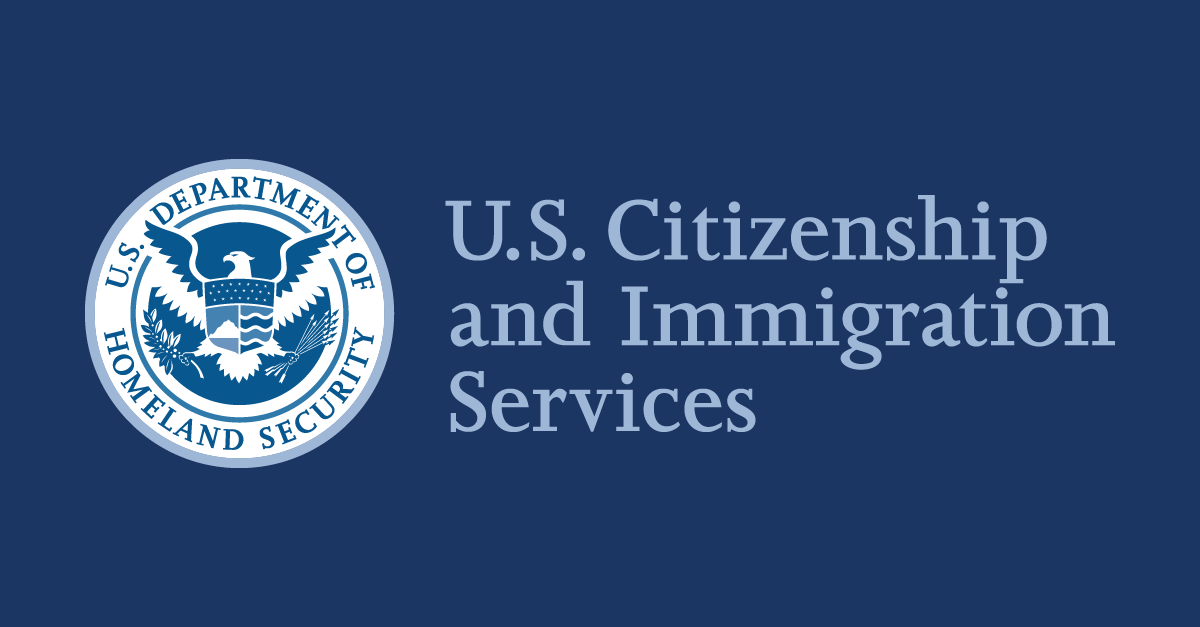If you are an international student looking to find a job in the US after graduation, there are some extra concerns you may have that a local job seeker would not, the largest of which would include how to obtain a visa and how to compete with US citizens for jobs.
Contents:
- Types of companies that may sponsor working visas
- Where to find companies that may sponsor working visas
- Networking after graduating
- Alternative methods of finding jobs
Confused? You can hire an immigration attorney
Pre-graduation
Working with a student visa
If you are still a student enrolled at a university in the US, there are certain visas that allow you to work during your period of study. With the normal F-1 student visa, you will be allowed to work on campus at your university for up to 20 hours a week. This may be a great start if you want a sneak peek at American work culture before deciding to apply for jobs in the States after graduation.
During your time of study, you can also apply for a CPT (Curricular Practical Training) which allows you to work an off-campus job, whether a part-time job, full-time job, or internship. While there is no maximum number of days for a part-time job, there is a 364-day limit for a full-time job under a CPT. A CPT is an excellent opportunity to experience the work culture of actual American businesses while in college, and you can have the option to add your work experience to your resume, especially if it is related to your field of study. Even if it is not related to your college major, any type of job can also help boost your English language skills if you are not yet fluent, as you can learn and apply work-related terminology and practical English that you would not learn in school.
An OPT (Optional Practical Training) extension on your F-1 visa also allows you to work up to one year after your graduation for practical training, which is work in your field of study. That means if you graduated with a biology degree, you can work for up to one year after graduation at a job that is directly related to biology. While you can only utilize a CPT during your time in school, a great perk of the OPT extension is that it allows you to work for a year after graduation. Furthermore, if you are in the STEM field (science, technology, engineering, mathematics), you can also extend your OPT for another two years if you meet the requirements. The OPT and STEM OPT extensions allow you to get work experience in the US after graduation which can help boost your resume so you can be a more attractive job applicant whom companies may want to sponsor a working visa for.
Note that a CPT can take two to three weeks to process while an OPT may take three to five months to process. You can only apply for a CPT while still a student, and you can apply for an OPT during your time as a student or after graduation. It is also important to note that if you work a full-time job for 12 months under a CPT, you will not be able to get an OPT extension. You can apply for an OPT 90 days before your graduation and up to 60 days after your last day of school, so be sure to not miss any deadlines.
International students who are in STEM fields tend to have advantages when it comes to getting visas and jobs because of the higher demand for employees in STEM fields. Non-US citizens who have specific high-demand skills have higher chances of standing out against US locals in the job market. This means these skilled internationals will also have higher chances of landing a job with an employer who will sponsor their working visas. During your time as an undergraduate student, it can be helpful to develop a specific skill that is in high demand to be able to obtain a working visa more easily. You can major or minor in STEM field subjects or even attend outside academies or institutions to gain these skills.
Another skill that international students can have over US citizens is the ability to speak multiple languages. About 75% of citizens of the US only speak English and are unable to speak any other language. Most international students tend to know at least two languages which gives them an advantage for jobs that require specific or multiple languages. Although a majority of jobs in the US may only require English, international companies or larger companies may find candidates who speak multiple languages valuable.
Where to find job opportunities and information on visas
Start searching for visa requirements and jobs early because the process can take some time. Do research to make sure you know the deadlines and costs for the visa or visa extension you are applying for in advance. International student offices at universities typically have extensive information on visas and even job opportunities available to non-US citizens. College career centers may also have listings of job opportunities for international students. Attending college career fairs can also help you connect with employers and learn about what kind of job opportunities are available in the US.
Networking, or making connections, is a key way to find job opportunities in the US. 85% of jobs in the US are found through networking which means making connections is vital if you want a job in the US. You can connect with others both in and outside your field by joining clubs on campus, volunteering, working, joining a business fraternity or any other organization that provides networking opportunities. Business fraternities and groups aimed toward making professional connections aid their members connect with both peers and alumni. A connection may randomly contact you one day about a job opening at the company they are working for, so it is always a good idea to stay open to meeting new people.
As an international student, you can also find job opportunities on job search sites such as Indeed and LinkedIn. We recommend you make a strong profile on LinkedIn where employers can find your page and potentially recruit you. You should also try to connect with people you know on LinkedIn to stay in touch in case any job opportunities come your way.
Post-graduation
Types of companies that may sponsor working visas
As an international student, you may feel overwhelmed by the millions of companies and job openings out there. Start first by looking for companies that have sponsored internationals in the past. In many international online communities, workers from abroad can help give you tips on where you can find employers who will potentially sponsor your working visa (see list of visas below). Getting visa sponsorship from a company that has already sponsored visas previously is much easier than convincing a company that has never gone through the process to sponsor you.
Larger companies or international companies tend to be more open to hiring and sponsoring the visa of employees from abroad. These companies may also have experienced corporate lawyers who will file your working visa for you. This can help you save money on hiring an immigration attorney yourself. Some companies, however, may have an international employee pay for a part of the fees involved in filing the working visa.
Where to find companies that may sponsor working visas
Cities in the US that tend to be more diverse have more companies that are willing to sponsor visas. States such as California and New York are more open and accustomed to global workers than states from the Midwest or the South. International companies and larger companies that have expanded abroad also tend to be more welcoming of people from overseas. Many companies in Silicon Valley in California sponsor visas for international engineers, but note that the living expenses in the area are some of the highest in the US. However, the average salary in Silicon Valley is also higher, so do not let high living expenses discourage you from applying for these jobs. Cities in the bay area of California (San Francisco, San Jose, etc.), New York City, Chicago, Boston, and Seattle are all large cities with more job opportunities for international graduates.
Many changes came from the COVID-19 pandemic, and currently, companies are giving priority to employees who are willing to physically come to work. This would not only put you at an advantage if you are willing to commute to work, but companies may be willing to pay more in terms of salary because of a higher transportation and housing cost on your end. The willingness to physically come to work also can help you land a job over your American counterparts.
As mentioned previously, you can browse job searching sites such as Indeed and LinkedIn to find opportunities and also look at the websites of the specific companies you are interested in to look for job openings. You can also read company reviews on Glassdoor to get an idea about a company’s work culture before applying. Previous and current employees will leave their reviews, sharing how bad or good their experiences at those companies were.
Networking after graduating
Because networking is the number one way people land jobs in the US, it is important to continue making connections after graduation. If you were unable to make many connections during your undergraduate years, you can still connect with other fellow alumni at your university’s alumni events. You can meet others in and outside of your field whom you were not able to connect with during your time at school.
You can also browse online international communities for job opportunities. There are also virtual career fairs where you can meet employers from all over the United States. You can choose a virtual career fair for the city or state that you live in or are interested in living in.
Through apps like Meetup, you can meet people in your profession or people who simply share the same hobbies or interests as you. Volunteering and joining groups or clubs for adults can also help you broaden your circle and connect with others.
Alternative methods of finding jobs
If you have tried to search for a job to no avail, you can hire a reverse recruiter to help you find a job. Conventional recruiters help companies and organizations find candidates to fill job openings, while reverse recruiters help job seekers find employment positions. These services can range from $2,500 to more than $10,000.
You can also get counseling from a career coach who specializes in aiding international students and graduates from abroad. These coaches can help you plan your career, strengthen your resume, and teach you interviewing and pay negotiation skills.
Another way into the US job market is by taking career courses or attending career-related bootcamps. For example, coding bootcamps help both students and adults learn coding skills in a relatively short amount of time. Not only can you learn specific skills to enter a certain field, some bootcamps can help connect you to related job opportunities after you complete the program. Obtaining certification or taking career courses to learn certain skills like UI/UX design, data science, or accounting will help make you a stronger candidate for job openings.
If you have sent out hundreds and hundreds of job applications only to be rejected repeatedly, you may want to consider seeking a higher degree of education. Companies may find higher degrees more attractive than a college degree, and you will get a prime opportunity to connect with more people in your field during the program. You can utilize the program’s resources to find job opportunities and delve deeper into your field of study.
Visas
Not all employers are aware of visa requirements or even the process itself. For a company to sponsor your working visa, you must have a skillset or experience that a local US job seeker would not have or you would have to be more skilled in the field than your American counterparts. This is because you have to add value to the company that a US citizen would not be able to for that company to invest in getting you a working visa. When filing your working visa, the company must provide a reason to the government for hiring you over a US citizen. Even if a company agrees to sponsor your visa, your application can be rejected by the US government. In that case, the company will not be able to hire you even if they wanted to. You must bring value to the country of the United States before bringing value to the company you wish to work for.
Understanding a company’s concerns about hiring an international graduate or job seeker is important for making yourself the best candidate to hire. The two main concerns companies will have is time and money. It takes both time and money to look into visa requirements and file a working visa. These are steps they would not have to take when hiring a US citizen, so that is all the more reason you should be able to bring value to the company that a US local could not.
Another potential concern is having future communication problems if the international graduate’s English is not proficient yet. Companies may find this detrimental to work that heavily involves teamwork and communication. This problem, however, tends to be more overlooked in some fields such as STEM fields, art, and sports where a person’s practical skills can outweigh their not-yet-perfect English skills. To prevent a language barrier from stopping you from landing a job, be sure to brush up on both your English skills and practical skills in your field.
Another point of concern for employers is that international employees may want to go back to their home country within a year or a couple of years. This would cause the company to have to start the search over to find a committed employee. In your cover letter and during your job interview, you should show that you want to grow your career in the States for years to come so the employer will not be worried you will leave after a few years.
Below our Engram team provided a list all visas that will allow you to work in the US along with their restrictions.
Common visas
Click on the visa name to see more details for that particular visa on the official US Citizenship and Immigration Services website.
Students
- F-1 visa (student): allows students to work on-campus jobs for up to 20 hours a week.
- F-1 visa with CPT (Curricular Practical Training) status: allows students to work off-campus jobs (part-time, full-time, and internships) after their first academic year until the last day of enrollment. Note: Students who worked full-time jobs under CPT for a maximum of 364 days are not eligible for an OPT extension.
There are some rare exceptions that allow F-1 students to work off-campus jobs without a CPT or OPT extension, such as if the F-1 student is significantly struggling financially during their time studying. Contact your international student office to see if you are eligible.
Fresh graduates
- F-1 visa with OPT extension: allows graduates to work for one year after graduation in a job related to their field of study. Note: Students can apply for an OPT 90 days before graduation and up to 60 days after their last day of enrollment.
- F-1 visa with STEM OPT extension: allows graduates to extend their OPT extension for another two years if they are in one of the STEM fields.
- M-1 visa (vocational student): allows vocational students can work in a role related to their vocation after their period of study. For every four months of study, such students are permitted one month of practical training for a maximum of six months.
Exchange visitors
Exchange visitors include exchange students and exchange workers enrolled in government-approved exchanged programs.
- J-1 visa (non-immigrant exchange visitor): allows visitor to work if work is part of the participant’s approved exchange program. The J-1 visa is the closet American equivalent to the working holiday visas available in some Commonwealth nations such as the UK, Australia, New Zealand, Canada, India, South Africa, Malaysia, and Singapore.
- J-2 visa (non-immigrant spouse of exchange visitor): allows spouse of J-1 visa holder to work after obtaining an Employment Authorization Document.
Specialty professionals (STEM, etc.)
One of the most common working visas for non-citizens is the H-1B visa which requires the non-citizen to have a bachelor’s or higher degree required by the occupation or an equivalent combination of education and experience. The occupation must involve the application of highly specialized knowledge.
There are numerous websites that list jobs that offer H-1B sponsorships as it is one of the most common visas. You can find such sites by simply searching “H-1B jobs.” Types of jobs that have been approved for H-1B visas include but are not limited to accountants, architects, biologists, chemists, civil engineers, college and university educators, economists, electrical engineers, graphic designers and artists, industrial engineers, mechanical engineers, physicians, software engineers, statisticians, and therapists.
- H-1B visa (Specialty occupation): allows non-citizen three years of employment and a three year extension. Additional extensions may be available for non-citizens who are in the process of obtaining lawful permanent resident status.
- H-3 visa (Trainees other than medical or academic. This classification also applies to practical training in the education of handicapped children): allows non-citizens to train in the US in a particular field with the intention to bring their skills back to their home country. The length of the visa is two years and cannot be extended or transferred to an H-1B or L-1 visa.
- H-4 visa (Spouse of H-1B visa holder): allows certain dependent spouses of H-1B visa holders to work with an Employment Authorization Document.
- O-1 visa (Extraordinary ability): allows up to three years of employment and one-year extension with no maximum cap for non-citizens who show extraordinary ability in the sciences, arts, education, business, athletics, or show business industry.
- O-2 visa: allows non-citizen who accompanies an O-1 artist or athlete to assist in a specific event or performance.
Common Green Cards
All categories of Green Cards allow permanent residency and let holders work in the US without restrictions. The two most common ways to obtain a Green Card is through employment and family relations.
EB visas ****are employment-based Green Cards. Most EB Green Card categories are rare or difficult to obtain (see Rare employment-based Green Cards). The EB-2 and EB-3 visas are more obtainable than the other rare EB visas but are still more difficult to obtain than the H-1B visa because EB-2 and EB-3 offer more benefits than the H-1B. When comparing the EB-2 and EB-3 visas, the EB-3 visa is easier to obtain that the EB-2 visa.
Employment-based Green Cards:
- EB-2 visa without National Interest Waiver (Employment-Based Second Preference – Exceptional ability or advanced degree professional): for non-citizens with a level of expertise significantly above that ordinarily encountered.
- EB-2 visa with National Interest Waiver (Employment-Based Second Preference – Exceptional ability or advanced degree professional with national interest waiver of job offer and, thus, the labor certification): for non-citizens with exceptional ability or advanced degree along with other requirements.
- EB-3 visa (Employment-Based Third Preference – Skilled workers, professionals, or other workers): for skilled workers, professionals, and other workers for jobs that require certain training, experience, or educational degree.
Family relation-based Green Card apply to:
- Immediate relative of a US citizen
- Other relative of a US citizen or relative of a lawful permanent resident under the family-based preference categories
- Fiancé(e) of a US citizen or the fiancé(e)’s child
- Widow(er) of a US citizen
- VAWA self-petitioner– victim of battery or extreme cruelty
Note that marrying a US citizen for the sole purpose of obtaining a Green Card is illegal and punishable by law whether the US citizen was aware that the marriage was illegitimate or not. The punishment for the non-citizen is up to five years in jail and/or a fine up to $250,000.
In conclusion
The most common working visa that non-citizens try to obtain is the H-1B visa. The EB-3 visa (Green Card) is also a favorable choice as it is not as difficult to obtain compared to other EB visas but promises permanent residency and no restrictions on working the US. Many international workers obtain an H-1B visa and later apply for an EB-3 visa.
Less common visas
Here is a list of less common visas. You can find more information for each visa by clicking on the visa name.
Intracompany transfer
- L-1A visa (Intracompany transfer of a manager or executive of a multinational firm)
- L-1B visa (Intracompany transfer of a specialized knowledge worker of a multinational firm)
- L-2 visa (Spouse of L-1 visa holder)
Mexican and Canadian nationals
- TN visa (NAFTA/USMCA professional)
Australian nationals
Temporary visitors for business
- B-1 visa (Temporary business visitor)
- WB (Temporary business visitor under visa waiver program)
- GB (Temporary visitor to Guam)
Occupation specific (non-immigrant)
- CW-1 (CNMI-Only transitional worker)
- E-1 (Treaty traders and qualified employee
- E-2 (Treaty investors and qualified employees)
- E-2C (Long-term foreign investors in the CNMI)
- H-2A (Temporary or seasonal agricultural workers)
- H-2B (Temporary non-agricultural workers): for temporary or seasonal work. 40% of the total H-2B visas issues is for landscaping and groundskeeping.
- I (Representatives of foreign press, radio, film or other foreign information media)
- P-1A (Internationally recognized athletes)
- P-1B (Internationally recognized entertainers or members of internationally recognized entertainment groups)
Cultural exchange
- P-2 (Individual performer or part of a group entering to perform under a reciprocal exchange program)
- P-3 (Artists or entertainers, either an individual or group, to perform, teach, or coach under a program that is culturally unique)
- Q-1 (Persons participating in an international cultural exchange program for the purpose of providing practical training, employment, and to share the history, culture, and traditions of the noncitizen's home country)
- R-1 (Religious workers)
Rare employment-based Green Cards (EB visas)
- EB-1A visa (Employment-Based First Preference – Extraordinary ability): for non-citizens with sustained national or international acclaim in a specific field.
- EB-1B visa (Employment-Based First Preference – Outstanding professors and researchers): for non-citizens with international recognition as outstanding in a specific academic area.
- EB-1C visa (Employment-Based First Preference – Multinational executives and managers): for multinational executives and managers.
- EB-4 visa (Employment-Based Fourth Preference – Immigration): for special immigrants which includes religious workers, special immigrant juveniles, certain broadcasters, certain retired officers or employees of a G-4 international organization or NATO-6 civilian employees and their family members, certain employees of the US government who are abroad and their family members, members of the U.S. armed forces, Panama Canal company or Canal Zone government employees, certain physicians licensed and practicing medicine in a US state as of a certain date, Afghan or Iraqi translators or interpreters, Iraqis who were employed by or on behalf of the US government, and Afghans who were employed by the U.S. government or International Security Assistance Force (ISAF).
- EB-5 visa (Fifth Preference – Immigrant Investor Program): for investors who invest invest at least $1,050,000 (or $800,000 in a targeted employment area or infrastructure project) in a new commercial enterprise in the U.S. which will create full-time positions for at least 10 qualifying employees.
Rare Green Cards (non-employment based)
- Special Immigrant: Religious worker, Special Immigrant Juvenile, Afghanistan or Iraq national, International broadcaster, Employee of an international organization or family member or NATO-6 employee or family member
- Refugee or asylee
- Human trafficking and crime victims
- Victims of abuse
- Other categories: Liberian Refugee Immigration Fairness (LRIF), Diversity Immigrant Visa Program, Cuban Adjustment Act, Dependent status under the HRIFA, Lautenberg parolee, Indochinese Parole Adjustment Act of 2000, American Indian born in Canada, Person born in the United States to a foreign diplomat, Section 13 (diplomat), abused spouse or child of a Cuban native or citizen, abused spouse or child of a lawful permanent resident who received his or her Green Card based on HRIFA
- Registry: If you have resided continuously in the US since before January 1, 1972, you can obtain a Green Card.
Confused? You can hire an immigration attorney
If you are having trouble navigating through all the different visas and their requirements, you can hire an immigration attorney, also known as immigration lawyers. Although costly, the attorney can consult you on the best visa options for you and even file the visa for you if you pay the additional fee.
Here is the cost breakdown for visa filing:
- Average consultation cost: $150-$300 per hour
- Attorney fees for visa filing (does not include USCIS Fee): $200 to $12,000 depending on the visa
- USCIS fee: about $300 to $2,500 depending on the visa
Below is the cost breakdown for the H-1B and EB-3 visas:
H-1B visa
- Attorney fees for filing: $1,000 to $2,500
- USCIS fee: $460 to $2,460
EB-3 visa
- Attorney fees for filing: $500 to $1,000
- USCIS fee: $400 to $500
Applying for jobs
Check out our articles How to Write a Good Resume, How to Write a Good Cover Letter, and How to Write a Job Application Email to become a master at applying for jobs. You can find jobs for non-US citizens by searching key phrases like H-1B jobs or find companies that have sponsored working visas. For example, you can find the top H-1B sponsoring companies on sites like this one.
When doing job interviews, remember that eye contact and body language are important in American culture. Be sure to make eye contact with your interviewer(s) and do not slouch. Strong social and interpersonal skills make you a more attractive candidate for any job. Make sure to be confident but not arrogant.
Are there any jobs non-citizens cannot apply for? Yes. Companies such as SpaceX cannot hire non-citizens or non-Green Card holders because of ITAR (International Traffic in Arms Regulations). US government jobs also require you to be a US citizen. There is even a job that many US citizens cannot have: Only a US citizen born in the US over the age of 35 years old and has resided in the US for 14 years can become a US president. That means a US citizen who was not born in the US cannot become president.
Best of luck on your job search, and if you need help with polishing up your English writing, check out Engram where our AI proofreader checks if your text for grammatical errors and any unnatural or awkward phrasing.

References:


https://www.studyinternational.com/news/how-to-stay-and-work-in-the-us-after-graduation/




























